Wine Cellaring and Storage Strategies
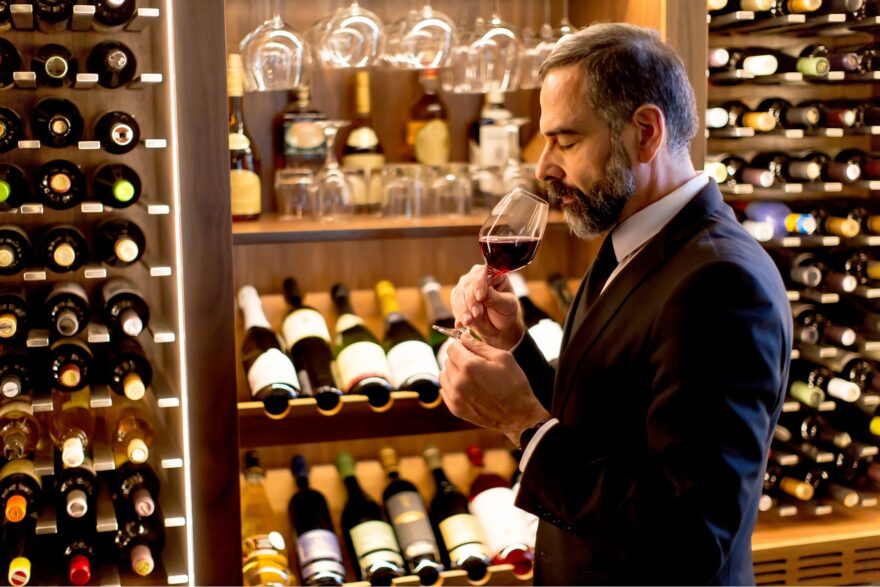

Cellar Design
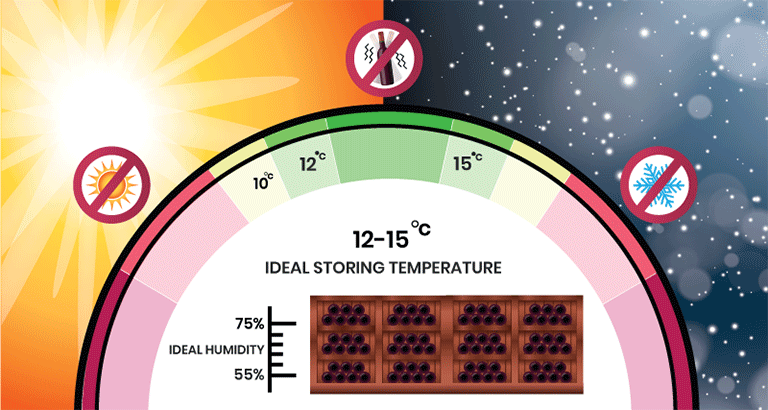
One of the first things to consider for a cellaring strategy, is of course your cellar. There is absolutely no point to building a beautiful wine collection if you don’t have a proper space to house it. Fine wines require an extremely controlled environment to ensure proper ageing and protection of your investment. So consider the following points before you start purchasing wines.
Climate control
For maximum ageing potential, wines must be stored in a climate-controlled environment, particularly in tropical countries. Too much heat and too much humidity will cause your wines to evolve too rapidly, cook the wines in the bottle, destroy the corks and labels, and otherwise ruin whatever you have in your cellar. Alternatively, leaving your wines in an unheated garage in a very cold climate may cause the wines to precipitate tartaric acid, creating unsightly crystals in the liquid.
Vibration
Ideally wines should be moved as little as possible during maturation and should be protected from excessive vibration. Movement stirs up the sediment in the bottle, and constant vibration negatively impacts the ageing process. If you are investing in a wine refrigerator, make sure the motor is properly insulated or removed from the main part of the unit, so it does not cause movement of the wine in bottle.
Light
Light is detrimental to all wines, but especially to light colored and white wines. UV rays from sunlight or fluorescent lights can start to break down the chemical compounds and molecules within wines, causing them to age prematurely and heating the bottles. Store your wines somewhere dark and do not use fluorescent lighting in your cellar.
Inventory Management

Even if you think you know what you have, you probably don’t. Make sure you invest in tracking your inventory so that you don’t let a wine go past its prime drinking window. Letting your wine age too long is simply a waste of money.
Software
If you have a sizable cellar, really anything over a few dozen bottles, consider using an app or software designed to track your inventory. You can create lists of the wines you have, sort by region, producer, vintage, etc, and even program in ideal drinking windows so that you don’t lose track of anything. Just don’t forget to update your list when you drink a bottle!
Storage
When you are putting your new purchases in your cellar, do try to keep things organized. Designate areas within the cellar by region, by vintage, by varietal, etc., and try to keep everything visible. Knowing exactly what is in your cellar is not the most helpful if you can’t find any of it. You always think you will remember where you stashed that case of Brunello but I will tell you right now, you won’t remember. Especially not if you regularly add to your collection.
Purchasing
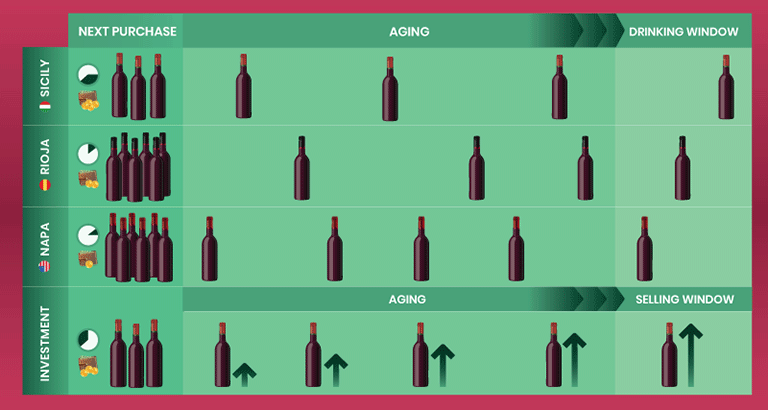
Before you purchase anything, think about why you are buying the wine. What is the purpose of your cellar? Is it as an investment, in order to resell wines that have gained in value? Is it for your own drinking pleasure? Is it an educational tool, to assess variation across producers and vintages? The following considerations will be more or less important to you based on your overall cellar buying strategy.
Budget
One thing that is important to everyone is their budget. Before you set out to stock your cellar, think about what kind of budget you have to work with or how much you generally spend on wine per year. This way you can make sure you don’t spend everything you have on 3 cases of extremely expensive Red Burgundy right away, but that you can allot so much money to reds, so much to white, so much to everyday wine, so much to special occasion wine, etc. and thus achieve balance in your cellar. Only the most wealthy can afford to buy blind.
Regions
Do you want to have a mix of regions in your cellar or would you prefer to focus solely on particular countries or wine-producing regions? If your goal is to build an educational cellar, you would ideally purchase wines from a variety of regions, perhaps even wines of the same varietal but from different regions around the world. This allows you to compare and contrast a subset of wines and learn about wine region variation. It will also help you learn about how wines from different regions age differently over periods of time.
If you are not interested in diversifying your regions, then pick 4 or 5 of your favorite regions, and focus solely on wines from these areas. You don’t want to fill your cellar with wine you got at a really great deal but will never drink. Add a few extra bottles of other styles or other regions for when you have guests, but do not indiscriminately buy things you will likely never drink.
Vintages

Vintage will also be important, no matter what strategy you adopt, but for different reasons. If you are purchasing wine for your own consumption, you want to make sure you purchase a good mix of wines that are ready to consume now and those which will require ageing. Ideally you would also purchase wines for ageing that will come to maturity at different times. If your whole cellar reaches maturity at the same time, not only will you have to wait several years for it to do so, but then you will have far too many bottles to consume all at once. It is best to start your cellar with a mix of different vintages and ageing potentials, and then continue to purchase with this same idea in mind for the future.
If your cellar is an investment, you will also pay attention to vintage, but with the goal of purchasing vintages that are likely to increase substantially in value. The game will be trying to assess which vintages are overpriced on release and which are undervalued, but show promise for the future.
If your goal is to educate yourself and hold comparative tastings, you should also hold a variety of vintages in your cellar, but focus on collecting different vintages of the same wine or from the same region. Tasting the wines vertically will help you understand how a wine ages, and help you learn more about what you like to drink and what to buy in the future.
Drinking windows
This relates back to vintage – just make sure that if you are buying many wines from the same vintage that you buy wines which will reach optimal drinking readiness at different times. You don’t want to buy 20 cases of the same type of wine and then be forced to consume this one kind of wine for months to keep it from going to waste. Try to balance the number of wines ready at any one point in your cellar.
Potential value increase
Consider this point only if you are planning on reselling your collection at some point in the future. Do not buy something that is out of your budget or that you don’t really plan to drink, just because the price is likely to go up. Reselling wines is really only possible if the wine has been stored in optimal conditions, the purchase history can be traced, and it will still require some time and effort. Few wines increase in value enough to be worth the storage costs for the length of time required to see a solid return on investment. For most buyers, you’re better off only purchasing wines you really plan to drink yourself.
Amount
How much wine should I be buying? Well, this will depend on your consumption habits, but generally I would not recommend buying only one bottle of a wine to cellar. Imagine how disappointed you will be if you have aged this wine for 5, 10 or 25 years, only to find out it was corked. I would recommend buying wine in 3, 6 or 12 bottle increments. Having multiple bottles of a wine also allows you to taste them throughout the ageing process, allowing you to discover how the wine develops and if it is worth it to purchase additional bottles.
If you are buying wine as an investment, I would recommend purchasing it in 6- or 12-bottle cases, or purchasing multiple cases. It is much easier to resell whole cases than individual bottles.
Rotation
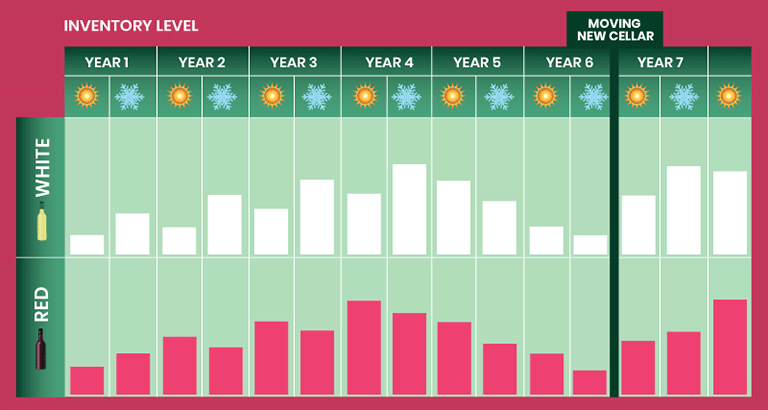
Remember that your cellar stock will or should be in constant turn over. Some bottles will be going out as others are going in. Keep these things in mind to ensure smooth rotation of your stock.
Seasonality
Many consumers change their drinking habits depending on the season. During the hotter periods of the year, you will likely consume many more young, crisp, light whites and rosés, while winter is a time for those heavier reds you’ve been ageing. Don’t forget to replenish your stock of fresh whites and find yourself with nothing to drink during the hottest days of summer! It’s often easier to remember to keep adding to your ageworthy inventory than it is to remember to buy wines for immediate drinking.
Replacing stock – how much inventory to retain?
In many cases, there is not much to think about, size of inventory is restricted based on the space one has available for proper wine storage. But it can also depend on the age of the collector. As a serious wine collection takes decades to build, so it can take decades to drink. It is worth questioning whether you plan to leave a full cellar at the end of your life, or whether you may decide it’s time to start paring down your inventory and replacing less.
Other events such as a move or a lifestyle change may also impact your desire for or the feasibility of keeping a large cellar inventory. Don’t overbuy things that you may end up not drinking or having to try to sell off, if that was not your intention.
Conclusion
Cellar management can be tricky if you do not have a strategy in place before you start building your wine collection. It is worthwhile to think carefully about the type of collection you want to have and how it will be organized before you start purchasing too many wines. A disorganized and unplanned cellar can lead to a loss of money and wine, if bottles are stored improperly or forgotten about until they are past their prime. A little work upfront will save you a huge amount of work in the long run.
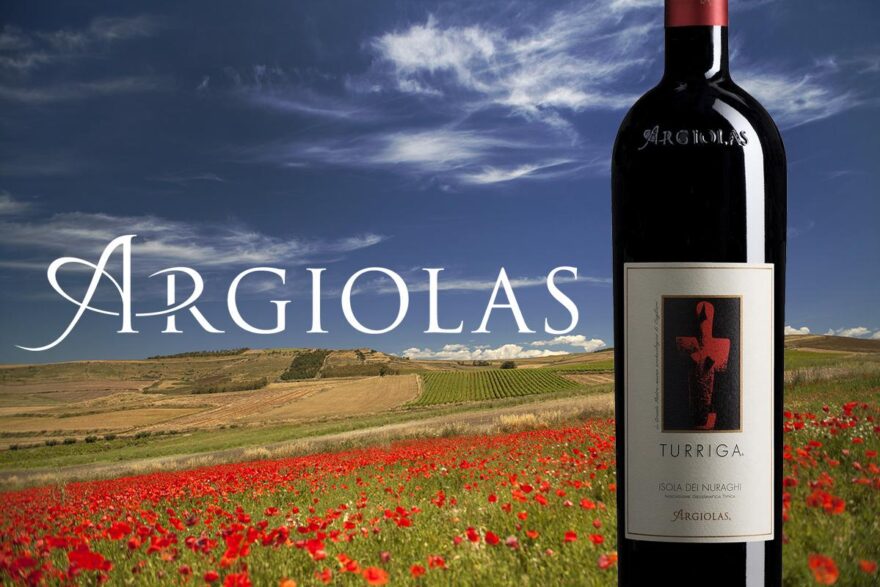
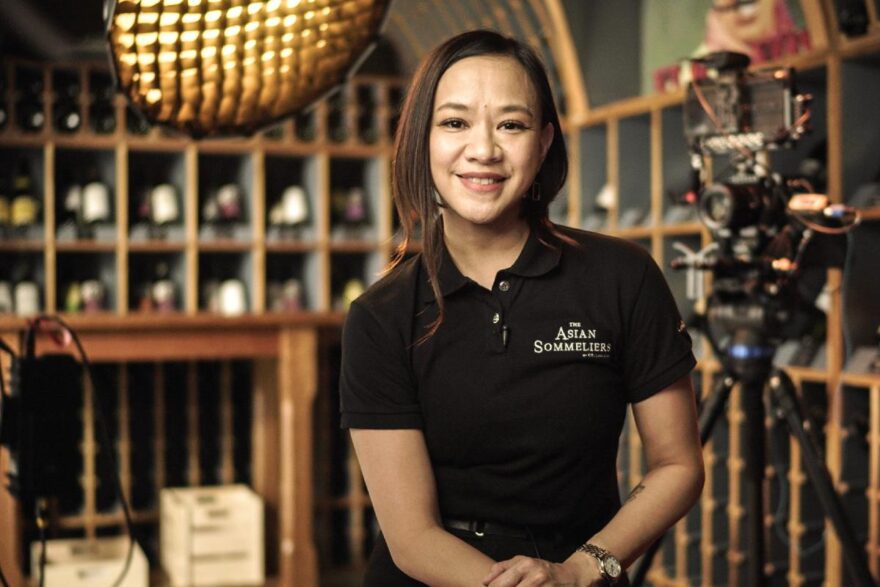
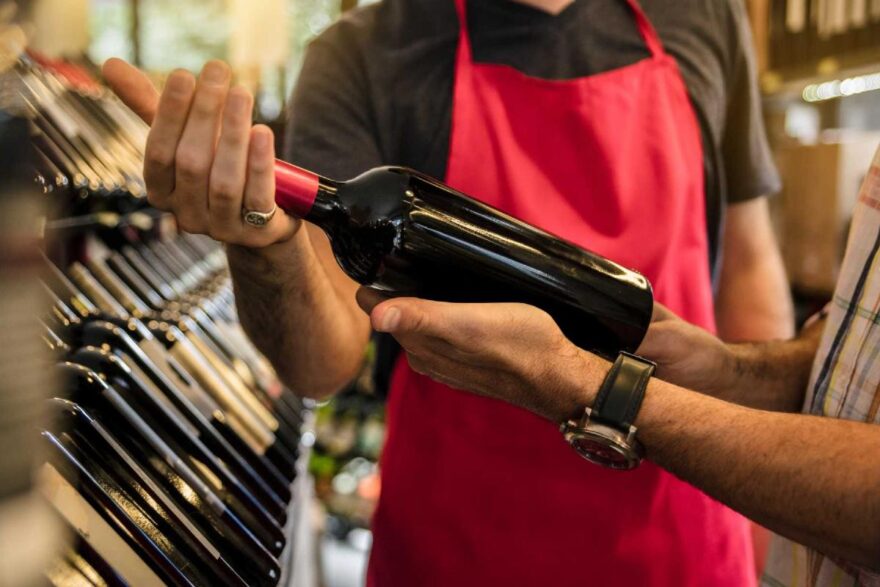


Wow this is really a complete guide. Very detailed. Good job.